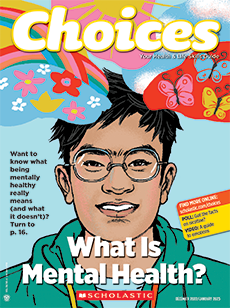Harper Elder biked toward school, snow swirling around her. An icy wind stung the 16-year-old’s bare hands. Growing up near Salt Lake City, Utah, Harper was accustomed to fierce winters. But this year she wasn’t prepared. She had no gloves. No warm coat. And no place to call home. It was early 2021. Harper had been crashing on her older sister’s couch, a 45-minute bike ride from school. Months earlier, years of conflict with her mother had reached a breaking point. Harper says her parents kicked her out. The first night, she started walking to a friend’s house, but then she stopped. She couldn’t bring herself to ask for help.
“I didn’t want to lose face or be vulnerable with people,” says Harper, now 21. “So I slept in a park. It was very, very scary.”
A growing number of young people share Harper’s struggle. Each year, an estimated 700,000 Americans ages 13-17 are homeless and on their own, according to government data. (The number balloons to 4.2 million when people ages 18-25 are included.) These teens bounce between shelters, cars, and friends’ homes. Sometimes they have to sleep outside.
Homelessness affects young people in every state—and it’s getting worse. The number of public school students identified as unhoused (either on their own or with their families) more than doubled between the 2004-05 and 2022-23 school years, according to the U.S. Department of Education.
But for Harper and others, homelessness does not need to be the end of their story, says Barbara Duffield. She leads SchoolHouse Connection, a national nonprofit working to overcome youth homelessness through education. “These young people can and do succeed,” she says. “They often will say, ‘This is something that happened to me. This is not who I am.’ ”
